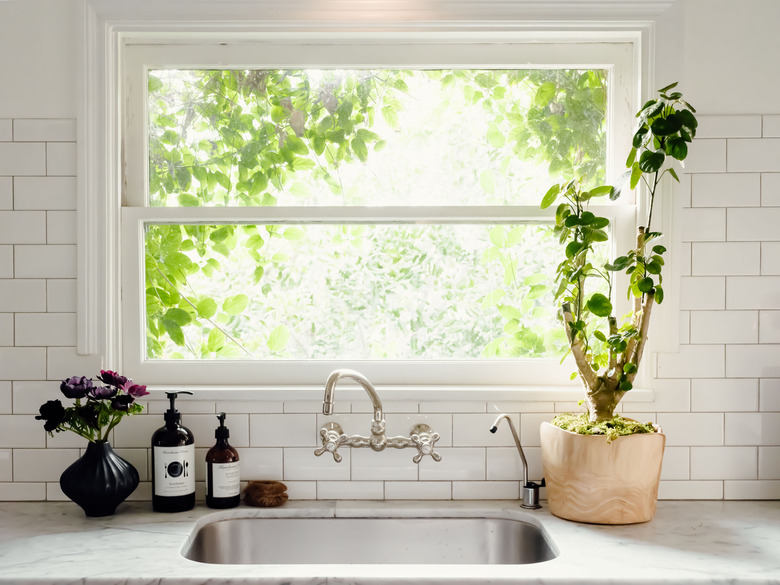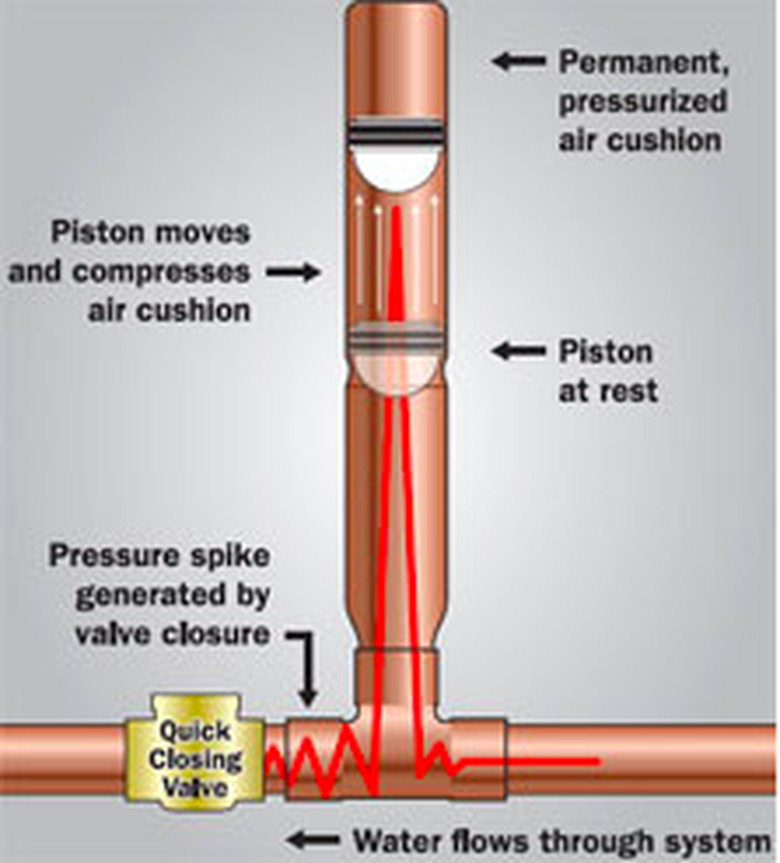How To Fix Water Hammer (Banging Pipes)
If you want to know what goes on inside your water pipes, watch the water flow in a rocky stream. As it hits the rocks, the water splashes with enough force to create waves, eddy currents and small whirlpools. Now imagine confining that water so it can't splash freely and you'll get a good idea of how banging can occur inside your water pipes.
Water flowing inside pipes isn't as turbulent as it is in a stream, but the effects of turbulence are magnified by the 50 or so pounds of pressure in the pipes. The effects are strongest when you turn a faucet on and off and the water changes its state of motion, or near plumbing appliances that open and close water supply vales suddenly. Washing machines and dishwashers are notorious for causing noise in pipes. The resulting banging is known as water hammer, and there are a few simple remedies.
One is to lower the pressure in your water system by adjusting the regulator—provided your plumbing system is equipped with one. If adjusting a regulator is not an option, the first solution is to get all the air bubbles out of the pipes that are making the turbulence worse. A second remedy is to repair your fixtures to ensure that water has a clear pathway through them. If none of these solutions works, the last option, short of retrofitting your plumbing with bigger pipes, is to provide a cushion in the pipes to absorb the force created by turbulent water flow. That's the job of a water hammer arrestor, a simple fitting that attaches to the banging pipe.
It Isn't Just about Noise
It Isn't Just about Noise
The loud banging caused by water hammer is disturbing, but it can also hint at the possibility of more serious problems in the future if it continues. The force of the water slamming against the pipes can cause leaks. They are most likely to develop at joints where the water changes direction, such as elbows and tees. Water hammer can also break the seal at a water valve or faucet connection. If a leak does develop, it's likely to do so quickly and without warning, and your bathroom or kitchen floor could be covered in water before you have a chance to react. Even worse, if the leak happens behind a wall, it can cause extensive damage before you're even aware of it.
Solution Number One—Get the Bubbles Out
One of the causes of water hammer is the presence of air bubbles in the pipes. The bubbles tend to collect around 90-degree joints and change position when the water starts or stops flowing. You may be able to purge the air out of pipes by using a simple procedure:
Turn off the water main, then open all the faucets in the house, starting with the ones on the top floor and working your way down. If the banging is happening in the cold water pipes, which is the case when you hear it around a toilet, just turn on the cold faucets. Flush all the toilets to drain the tanks. Wait for about 30 minutes, then turn the water main back on and let water flow from all the faucets for about 5 or 10 minutes. Turn off the faucets on the lower floors first, then work your way upstairs. The toilets will automatically refill.
Solution Number 2—Replace Toilet Fill Valves and Repair the Faucets
If water hammer happens when you flush a particular toilet, and if the toilet is old enough to have a non-regulated fill valve, replace the fill valve. Older fill valves usually have ballcock assemblies and the valves tend to open and close very suddenly, which can cause banging. A regulated fill valve, which usually has a cup-style float, tends to open and close more gradually. It is inexpensive, easy to install, and it's available at any hardware store. In fact, it's pretty much the only type of replacement valve you can find these days.
Mineral build-up and worn washers on old faucets can also cause water hammer by restricting water flow. If you're having a problem near a particular faucet, disassemble it and replace all the gaskets and O-rings. Take out the valve and soak it in vinegar overnight to dissolve scale and hard water deposits.
Solution Number 3—Install a Water Hammer Arrestor (Air Chamber)
Water isn't compressible, but air is, and that's the idea behind a water hammer arrestor, also known as an air chamber. This is a simple fitting that you can solder onto your copper water pipes or connect to the pipes with brass compression fittings. It consists of a 2- to 3-inch air chamber separated from the water passageway by a piston. When turbulence develops in the vicinity of the arrestor, the water pushes against the piston, which in turn compresses the air behind it, thus absorbing the force of the water and stopping the banging.
A water hammer arrestor has to be located near the fitting that is causing the banging problem, and it must be installed before the fitting with respect to the direction of water flow. If you're having trouble with banging around your toilet, for example, install a water hammer arrestor in the pipe just before the shut-off valve. In many cases, this involves cutting out and replacing some drywall.
The procedure for installing a water hammer arrestor is no more difficult than for installing any other fitting. Water hammer is a problem primarily in copper pipes, so that usually means soldering the arrestor to the pipes, much as you would solder a coupling. The compression chamber sticks out about 4 inches, but that usually isn't a problem, since you can orient it at any angle in a 360-degree plane perpendicular to the pipe.
Soldering is a simple procedure for a professional plumber, but not necessarily for an amateur. If you don't have confidence in your soldering skills, you have another option. Purchase a water hammer arrestor with compression fittings. These don't require soldering and can be installed by anyone who can use a wrench.

